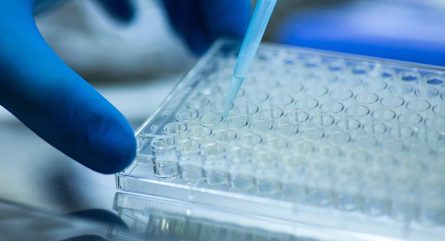The Takeaway: Artificial intelligence and machine learning are changing our lives in huge ways, automating tasks such as data entry, customer service, and even driving cars. The next frontier? Using artificial intelligence and machine learning in protein and antibody design.
Artificial intelligence (AI) is a broad term that describes the use of machine learning (ML) and other cognitive technologies. AI is when computers mimic human understanding to learn, think, and make decisions. ML is an application of AI that allows machines to gather knowledge from data, then learn from it autonomously.
These two technologies are making inroads into healthcare.
How is AI used in healthcare?
AI can diagnose patients, remotely treat them, and monitor their health. AI can also help detect and track infectious diseases, such as COVID-19, tuberculosis, and malaria. In addition, it helps with drug discovery, communication between patients and physicians, the transcription of medical documents, the analysis of radiographic data, and the identification of patterns and irregularities that may be overlooked by humans, resulting in the early detection of diseases like cancer.
How is ML used in healthcare?
ML uses systems and tools to sort and categorize patient data. ML algorithms can discover patterns in sets of data that allow medical professionals to identify new diseases and predict treatment outcomes. ML can also predict which patients are at risk of developing certain diseases, provide personalized recommendations for diet and exercise, improve the efficiency and speed of medical services, quickly scan electronic health records to manage patient records, schedule appointments, and automate processes.
What is protein engineering?
Protein design is an arm of synthetic biology that engineers custom proteins and peptides for specific applications. This process involves manipulating an amino acid sequence to create new proteins with specific properties. Protein design combines computational techniques and lab experiments, with the goal of creating proteins with functions that are not available naturally. There have been many useful proteins engineered for both bioproduction and biomedical applications, one example is an enzyme that can break down plastics. Protein design is challenging because it’s hard to model how a protein’s three-dimensional structure and function is encoded in its amino acid sequence.
What is antibody engineering?
Antibody design is the process of predicting then designing the structure of antibodies. The main goal of antibody engineering is to create antibodies that will bind strongly to a desired target at a desired site. Antibodies are host proteins produced by a body’s immune system as a reaction against foreign molecules that enter the body. These foreign molecules, also called antigens, are what elicit the immune responses that make you sick, while antibodies are how a body defends itself against the antigens.
How can AI and ML support protein and antibody design?
Designing antibodies and proteins can be challenging. When it comes to antibody design, challenges include:
- Functional limitations: Therapeutic antibodies may have inadequate pharmacokinetics, tissue accessibility, or impaired interactions with the immune system.
- Physical instabilities: The protein nature of monoclonal antibodies (mAbs) makes them highly sensitive to various physical and chemical conditions, which can lead to instabilities.
- Modeling of an antibody/antigen complex structure: Modeling of an antibody/antigen complex structure remains an unsolved problem.
Meanwhile, protein design has two main challenges:
- Lack of understanding the factors that contribute to the protein structure and functions within an amino acid sequence.
- A lack of structural prediction from folding.
AI and ML, however, offer many advantages and can help break through some of these challenges in protein and antibody design. AI has the potential to take an antibody and improve it using knowledge gained from investigating other similar antibodies. AI also has the ability to design an antibody from scratch by picking, choosing, and combining different attributes found in other antibodies.
When it comes to protein design, machine learning can generate protein designs that have valuable structural features that don’t exist naturally. These proteins can be used to make materials with mechanical properties that are similar to existing materials but that have a much smaller carbon footprint.
IDT’s role in protein and antibody design
Integrated DNA Technologies provides custom nucleic acids for research applications, and has a variety of tools for protein and antibody design, including:
- Codon Optimization Tool: Converts DNA or protein sequences from one organism to another for expression. The IDT algorithm screens and filters sequences to minimize complexity and secondary structures.
- eBlocks™ Gene Fragments: Can be used for protein design research and in antibody discovery workflows.
- Protein Engineering Booklet: A free booklet that explores how synthetic biology has benefited a wide variety of applications.
- Alt-R™ CRISPR Systems: A workflow for CRISPR-based gene disruption.
- Antibody discovery: Workflows for targets assessment, hit generation, and lead optimization.

























